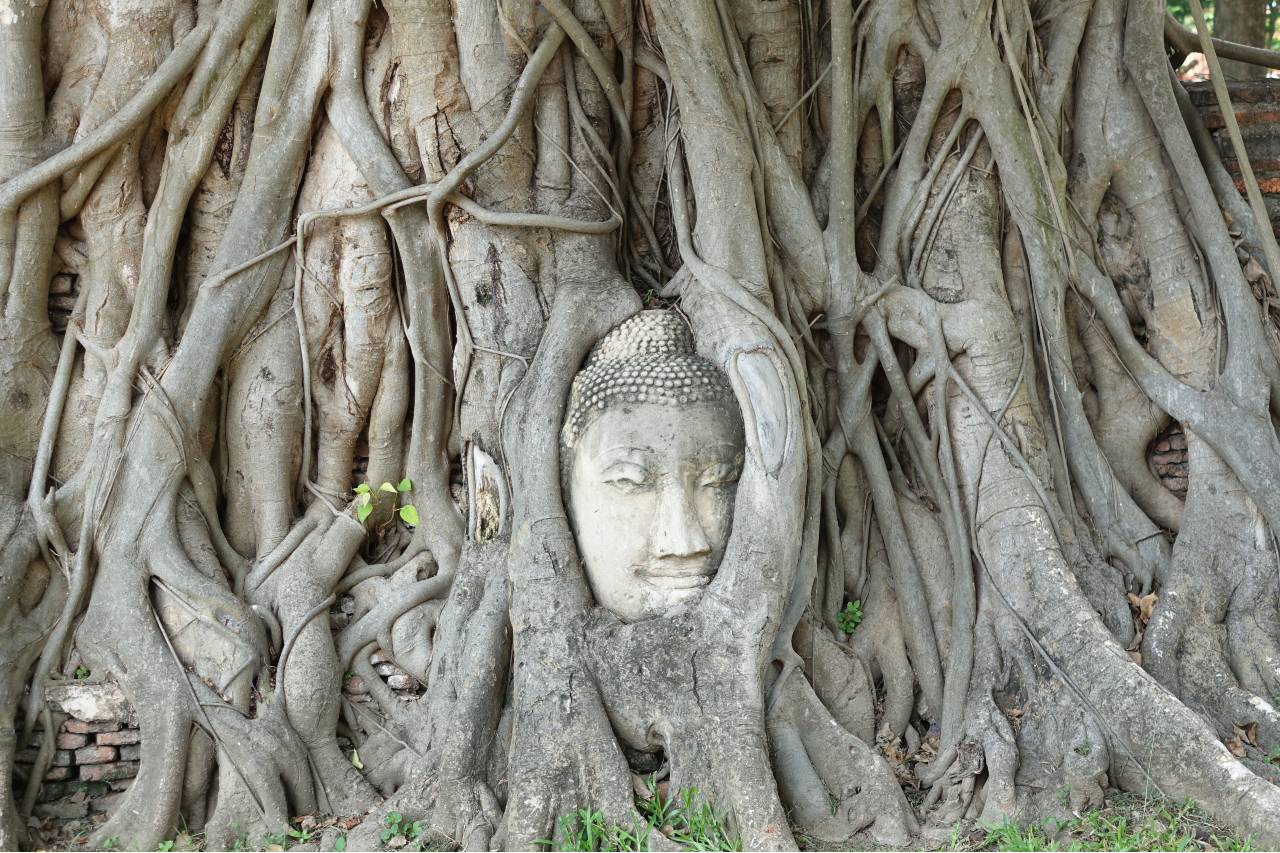The animistic perspective comes much easier in Eastern philosophy than in Western philosophy as eastern traditions like Buddhism, Vedanta and Taoism naturally embrace a more nondual perspective on existence.
There seems to be a perceptual flaw in Western secular materialism that detaches and separates the human being from the felt consciousness of the interconnectedness of life.
I believe that fixing this perceptual flaw is crucial to the evolution of humanity and the reversal of our destruction of the biosphere. The words of deep ecology visionary Arne Naess come to mind about this perceptual crisis of consciousness:
“Ecological ideas won’t save us, what we need is ecological identity, ecological self.”
The Zen Buddhist philosophy of Thich Nhat Hanh does a beautiful job of resolving this perceptual flaw and expanding human identity to embrace a wider, ecological self that isn’t separate from or superior to the rest of life.
Nonduality, Interbeing And The Ecological Self
Do animals and plants have consciousness? Are electrons alive? Thich Nhat Hanh does a beautiful job of explaining an animistic nondual consciousness of things.
“Interbeing is the understanding that nothing exists separately from anything else. We are all interconnected. By taking care of another person, you take care of yourself. By taking care of yourself, you take care of the other person. Happiness and safety are not individual matters. If you suffer, I suffer. If you are not safe, I am not safe. There is no way for me to be truly happy if you are suffering. If you can smile, I can smile too. The understanding of interbeing is very important. It helps us to remove the illusion of loneliness, and transform the anger that comes from the feeling of separation.”
Thich Nhat Hanh, How to Fight
I really like how Thich Nhat Hanh’s philosophy of “interbeing” describes a shift in the “narrative of separation” to a new way of thinking and being informed by the ‘narrative of interbeing’ where we are participants within a dynamic whole and we recognize that we can only exist in relationship with the rest of life.
As pointed out by Daniel Christian Wahl, there is a lot of similarities between the philosophy of interbeing and the emerging ecological paradigm of systems thinking.
Here’s a rather mind expanding quote from Thich Nhat Hanh’s book The Heart of Understanding: Commentaries on the Prajnaparamita Heart Sutra on interbeing and how everything we perceive is interconnected:
If you are a poet, you will see clearly that there is a cloud floating in this sheet of paper. Without a cloud, there will be no rain; without rain, the trees cannot grow; and without trees, we cannot make paper. The cloud is essential for the paper to exist. If the cloud is not here the sheet of paper cannot be here either. So we can say that the cloud and the paper inter-are. ‘Interbeing’ is a word that is not in the dictionary yet, but if we combine the prefix ‘inter’ with the verb ‘to be,’ we have a new verb, inter-be. Without a cloud we cannot have paper, so we can say that the cloud and the paper inter-are.
If we look into this sheet of paper even more deeply, we can see the sunshine in it. If the sunshine is not there, the forest cannot grow. In fact, nothing can grow. Even we cannot grow without sunshine. And so, we know that the sunshine is also in this sheet of paper. The paper and the sunshine inter-are. And if we continue to look, we can see the logger who cut the tree and brought it to the mill to be transformed into paper. And we see wheat. We know that the logger cannot exist without his daily bread, and therefore the wheat that became his bread is also in the sheet of paper. The logger’s father and mother are in it too. When we look in this way, we see that without all these things, this sheet of paper cannot exist.
Looking even more deeply, we can see ourselves in this sheet of paper too. This is not difficult to see, because when we look at a sheet of paper, the sheet of paper is part of our perception. Your mind is in here and mine is also. So we can see that everything is in here with this sheet of paper. You cannot point out one thing that is not here — time, space, the earth, the rain, the minerals in the soil, the sunshine, the cloud, the river, the heat. Everything co-exists with this paper. That is why I think the word interbe should be in the dictionary. ‘To be’ is to interbe. You cannot just be by yourself alone. You have to inter-be with every other thing. This sheet of paper is, because everything else is.
Suppose we try to return one of the elements to its source. Suppose we return the sunshine to the sun. Do you think that this sheet of paper would be possible? No, without sunshine nothing can be. And if we return the logger to his mother, then we have no sheet of paper either. The fact is that this sheet of paper is made up only of ‘non-paper’ elements. And if we return these non-paper elements to their sources, then there can be no paper at all. Without non-paper elements, like mind, logger, sunshine, and so on, there will be no paper. As thin as this sheet of paper is, it contains everything in the universe in it.
The Insight of Interbeing
Thich Nhat Hanh goes a lot deeper into his insightful philosophy of interbeing in this talk:
A Cloud Never Dies
If you want to learn more about Thich Nhat Hanh’s teachings on mindfulness, interbeing and the spiritual ecology of animism I recommend watching this short documentary about his life.
- 10 Best Peru Hiking Tours And Multi-Day Treks In The Andes - April 19, 2025
- 10 Best Banff Hiking Tours In The Canadian Rockies - April 19, 2025
- 10 Best Vancouver Hiking Tours In The B.C. Coast Mountains - April 19, 2025





